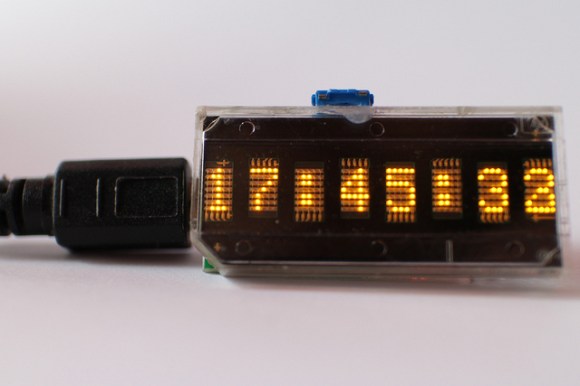
Wow, we’re seeing all kinds of good stuff from NYC Resistor today. [Caleb] found this link to [Hudson’s] early work on a geeky wristwatch. It is based around an HDSP-2112 eight-digit alpha-numeric display. Each digit is a 5×7 array of LEDs, but the look of it really reminds us of [Woz’s] Nixie Wristwatch. The nice thing about using a display like this one is it’s much easier to drive and the power requirements don’t really call for special consideration either.
The display happens to be nearly the same footprint as the Teensy 2.0. In fact, the display is a bit longer. That makes it a perfect backpack, bringing everything necessary to drive the display. Check out the video after the break to see it scrolling the time as words, and displaying numbers.
This needs to have an RTC and portable power source before you can wear it around. But the proof is there. Perhaps [Hudson] will spin his own board with a uC that includes RTC capability and a charging circuit for a tiny Lithium cell.












